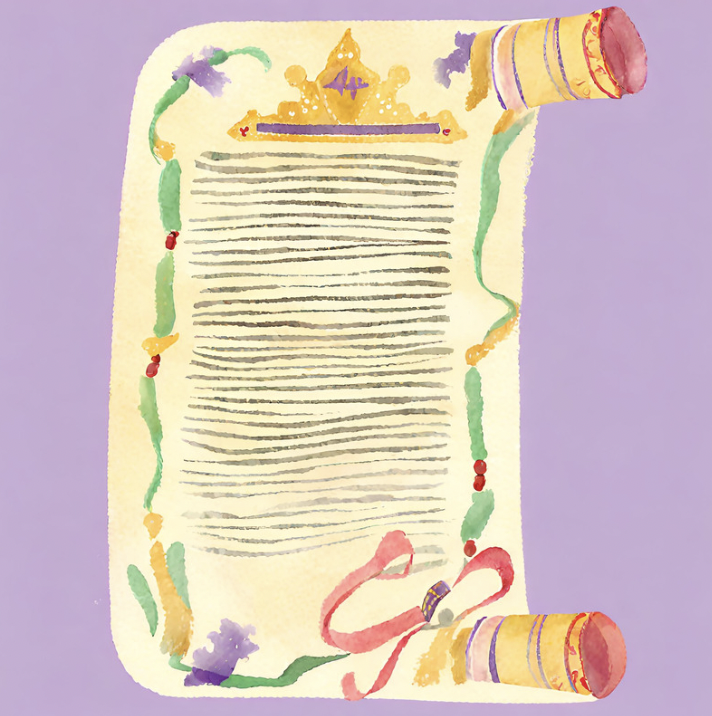Upon a surface-level study of Megillat Esther, one quickly realizes that the Scroll of Esther — read twice a year on the evening and morning of the Purim holiday — is a book unlike any other in our literary canon.
Compared to its counterparts in the Tanach, Megillat Esther stands out as somewhat of an anomaly. Firstly, the book’s plot takes place outside of the Land of Israel, in the Persian capital city of Shushan. The story also occurs well after the First Temple period, making Megillat Esther among the most recent of all the holy works.
Secondly, the Megillah omits any mention or reference to Hashem’s name, the only such book in Tanach. Moreover, the fact that Megillat Esther prescribes the formation of a new Jewish holiday, Purim, together with its comprehensive set of mitzvot and customs is similarly unprecedented in Jewish tradition.
For the reasons above, Megillat Esther is undoubtedly a special book, as is Purim inherently a unique holiday. In my opinion, however, one of the most distinguishing features of Megillat Esther is not its setting, its context, or its themes — although they are striking in their own right — but rather the book’s characters themselves.
In Megillat Esther, the most salient roles in the plot are played by seemingly ordinary individuals. There is nothing, prima facie, exceptional about the protagonists and ultimate heroes of the story, Mordechai and Esther, nor about the antagonist, Haman. Even King Achashvarosh, our Sages famously extrapolate, didn’t come from royal pedigree.
In the Megillah, we are told scarcely anything about these characters’ pasts, their real identities, or their qualifications. For a book so celebrated for its illustrative personalities and exciting plot twists, the lack of proper introduction and personal and historical context in Megillat Esther comes as a surprise.
Perhaps, however, this peculiar feature of the Megillah is actually by design. After all, Megillat Esther is an archetypal story about the heroism of certain individuals, who, in a time of national distress, rose to the occasion to deliver a miraculous outcome for the Jewish people.
Megillat Esther thus provides a prescient blueprint relevant for generations of Jews. It tells us of a story — one that has, sadly, become a classic and distinctly Jewish story — of an attempt made by malicious individuals in a foreign kingdom years ago to annihilate the Jewish people. It also details the efforts that valiant Jews undertook to bring salvation to the community.
The messages contained within Megillat Esther are truly timeless. Even so, the legacy of the book may be particularly poignant at this moment in our history. In 5784, the Jewish people are once again threatened with genocide from emboldened enemies. In their various forms, these enemies seek to destroy and terrorize the Jewish people and the sovereign State of Israel.
With this contextual backdrop, a certain excerpt in the Megillah makes an especially powerful impression. In chapter 4, verse 14, of Megillat Esther, Mordechai famously presents Queen Esther with a charge she can’t deny. Mordechai tells her emphatically: “If you keep silent in this crisis, relief and deliverance will come to the Jews from another quarter, while you and your father’s house will perish.”
The Jewish people, Mordechai avers, will be saved — somewhere, somehow. Mordechai understands that the attempt to destroy the Jews will be met, ultimately, with the destruction of the enemy.
However, at this point, Mordechai makes a fascinating observation. He notes how Esther has ascended to a royal position, and how she now has unprecedented influence and leverage in the palace. Mordechai concludes: “And who knows, perhaps you have attained royalty for just such a crisis.”
This remarkable excerpt, in my opinion, demonstrates two key lessons. Firstly, we, much like the Jews of Shushan, no longer have the ability to rely on Hashem’s supernatural, omnipotent miracles — as we did when we left Egypt and sojourned in the desert. Thus, there are instances in Jewish history when one is obligated, even at a moment’s notice, to seize the initiative and take bold action.
The second insight from this passage is more subtle. In this excerpt, the Megillah is teaching us that there are no prerequisites to leadership or to meaningful action. Individuals, “ordinary” as they believe they may be — can actually play an extraordinary role in the unfolding of Jewish history.
In this excerpt, the Megillah is teaching us that, not unlike Mordechai and Esther, one doesn’t have to possess exceptional qualifications or credentials to take initiative and shoulder responsibility. One doesn’t have to be a political figure, a military leader, nor a business executive to create change.
Mordechai and Esther teach us that the Purim story is fundamentally about plebeians, not patricians. Mordechai and Esther teach us that our history as a nation is thus egalitarian: ordinary people have the ability to do extraordinary things.
Rising to the occasion during a challenging and uncertain time in Jewish history, Mordechai and Esther have become figures of deep admiration in the Jewish consciousness.
Mordechai and Esther teach us that communal power and continuity is rooted not in stature, titles, or fame, but in the resolve of people to take charge of its destiny. Indeed, our collective story as Jews has been written by heroic individuals such as Mordechai and Esther, and through the actions, sacrifices, and investments they made.
Enshrined in Megillat Esther, such lessons are apt to remain with the Jews perennially. Today, like in Shushan in 300 B.C.E, it is people like Mordechai and Esther that continue to forge Jewish destiny.

